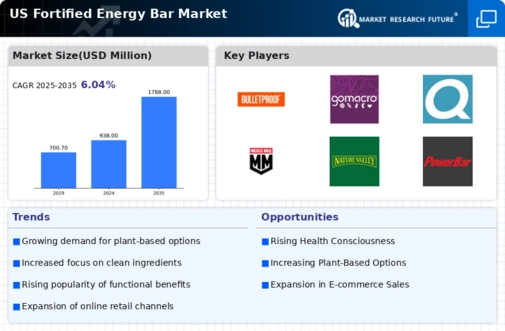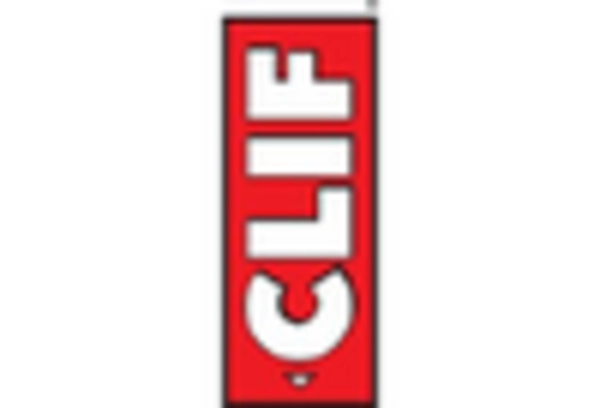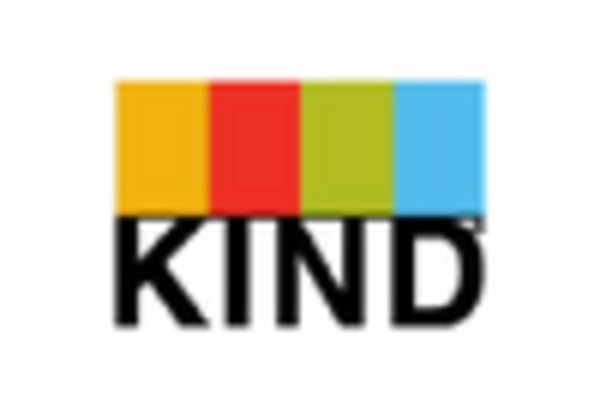The fortified energy-bar market is characterized by a dynamic competitive landscape, driven by increasing consumer demand for health-oriented snacks and the growing trend of on-the-go nutrition. Key players such as Clif Bar & Company (US), KIND Snacks (US), and Quest Nutrition (US) are strategically positioned to leverage innovation and sustainability in their product offerings. Clif Bar & Company (US) emphasizes organic ingredients and environmental responsibility, while KIND Snacks (US) focuses on transparency and wholesome ingredients. Quest Nutrition (US) has carved a niche with its high-protein, low-carb bars, appealing to fitness enthusiasts. Collectively, these strategies foster a competitive environment that prioritizes health, sustainability, and consumer engagement.
In terms of business tactics, companies are increasingly localizing manufacturing to enhance supply chain efficiency and reduce carbon footprints. The market structure appears moderately fragmented, with several players vying for market share, yet dominated by a few key brands that influence trends and consumer preferences. This fragmentation allows for niche players to emerge, catering to specific dietary needs and preferences, thereby enriching the overall market landscape.
In October 2025, Clif Bar & Company (US) announced a partnership with a leading plant-based protein supplier to enhance its product line with new, innovative flavors. This strategic move not only aligns with the growing consumer preference for plant-based options but also positions Clif Bar & Company (US) as a frontrunner in the sustainability narrative, potentially increasing its market share among health-conscious consumers. The partnership underscores the importance of ingredient sourcing in shaping brand identity and consumer loyalty.
In September 2025, KIND Snacks (US) launched a new line of energy bars specifically designed for athletes, featuring enhanced protein content and electrolytes. This initiative reflects a targeted approach to capture the sports nutrition segment, which is witnessing robust growth. By addressing the specific needs of athletes, KIND Snacks (US) is likely to strengthen its market position and appeal to a broader audience, thereby enhancing brand visibility and consumer trust.
In August 2025, Quest Nutrition (US) expanded its distribution channels by entering into a strategic alliance with a major online retailer, significantly increasing its reach to health-conscious consumers. This move is indicative of the ongoing trend towards digital transformation in the food sector, where e-commerce plays a crucial role in consumer purchasing behavior. By enhancing accessibility, Quest Nutrition (US) is poised to capitalize on the growing demand for convenient, health-oriented snacks.
As of November 2025, current competitive trends in the fortified energy-bar market are increasingly defined by digitalization, sustainability, and the integration of artificial intelligence in product development and marketing strategies. Strategic alliances are becoming pivotal in shaping the landscape, allowing companies to pool resources and expertise. Looking ahead, competitive differentiation is likely to evolve from traditional price-based competition to a focus on innovation, technology, and supply chain reliability. This shift suggests that companies that prioritize these elements will be better positioned to thrive in an increasingly health-conscious and environmentally aware market.

















Leave a Comment